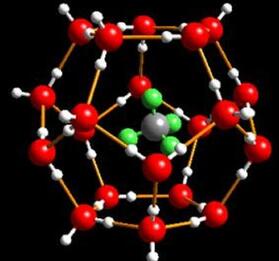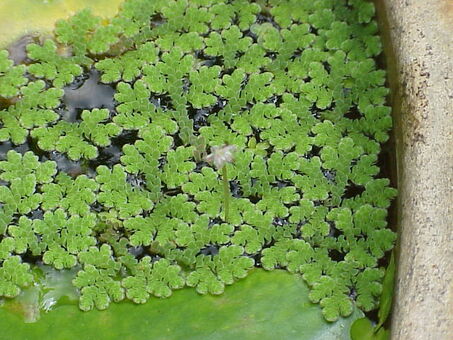Some of Earth’s past mass extinctions have had nothing to do with methane; it’s not necessarily part of the equation when a rock falls on us from space. But certain mass extinctions, most notably the End Permian and the Paleocene-Eocene Thermal Maximum, seem to have erupted when warming caused the planet to belch a few dozen megatons of CH4 and other GHGs, methane and other greenhouse gasses, into the atmosphere.
Professional climate—obfuscator—Willy Soon likes to blame Milankovitch Cycles, periodic changes in Earth’s orbit around the sun, for changes in climate. A Milankovitch Cycle could indeed be the triggering event, the grenade's hammer swinging against the percussion cap. Or the initiator could be and has been volcanism. But even a little warming can release CO2, nitrous oxides, methane and other greenhouse gasses—the fuse in the grenade—and as those build up in the atmosphere and warm the planet, there are three sources of methane—the main explosive charge—that could destroy civilization and a lot of innocent species: permafrost, gas clathrates, and the remnants of the Azolla event. And the first two are already venting.
One-quarter of the land in the northern hemisphere is permafrost. That soil, in some places more than 1,000 meters deep, is mostly dead plants and animals that have been frozen and have not rotted for at least 1.8 million years, since the beginning of the Pleistocene. That’s already melting and rotting as the Arctic warms four times as fast as the temperate and tropical zones. Parts of the Arctic reek all summer long, now, as that soil turns to muck and washes down the rivers. It won’t do mussel and clam beds in the shallow Arctic Ocean, or animals that depend upon them, like walrus, any good.
Arctic permafrost might contain 1700 billion tonnes of carbon, twice as much as is already in the atmosphere (NASA JPL). There might be three times as much lurking under Antarctica’s ice. Just doubling the carbon in the atmosphere will warm the planet something between three and six degrees C, probably about 5 degrees. Tripling it would be suicide. Five times as much. … But there’s more.
Gas clathrates/methane hydrates are methane and other hydrocarbon molecules frozen into a matrix of water ice, found under permafrost and deep in the muck on the continental shelves, as far south as San Francisco and probably as far north as Adelaide, in all the world’s oceans. The pressures required occur under 350 to 5,000 feet of water. Estimates range to 10,000 giga—billion—tons, 10 teratons, more than all other fossil fuels combined. A little warming can cause--is causing--the most sensitive deposits to vent, causing more warming that releases more gas in a self-reinforcing feedback loop. And self-reinforcing feedback loops grow exponentially, which means they grow slowly for a while, picking up speed, then explode vertically like an F-22 clawing for altitude.
Methane initially captures 120 times as much heat as CO2, then as it decays to CO2 and water, 80 times as much over 20 years and 34 times as much over a century; the CO2 it becomes may remain in the atmosphere absorbing heat for millennia. Clathrate deposits, especially in the shallow seas of the east Siberian continental shelf, are already venting. If we can’t stop and reverse this by cooling the planet, we are already doomed.
Methane initially captures 120 times as much heat as CO2, then as it decays to CO2 and water, 80 times as much over 20 years and 34 times as much over a century; the CO2 it becomes may remain in the atmosphere absorbing heat for millennia. Clathrate deposits, especially in the shallow seas of the east Siberian continental shelf, are already venting. If we can’t stop and reverse this by cooling the planet, we are already doomed.
A methane burp that was probably initiated by volcanos releasing CO2 was the proximate cause of the Paleocene-Eocene Thermal Maximum, a mass extinction event 56 million years ago. The PETM may have ended when the bottom of the then-landlocked Arctic ocean went anoxic—no oxygen, so nothing could live, or rot—and the surface accumulated fresh water that supported vast matts of Azolla, common duckweed. Azolla (mosquito fern, duckweed fern, fairy moss, water fern) grows incredibly fast—it can double its weight in 3 to 10 days—sucking lots of carbon out of the atmosphere. When that Azolla died, 56 million years ago, it sank and piled up on the seabed, drawing down atmospheric carbon enough to end the PETM. It’s still there, gigatonnes of it, and when the Arctic ocean warms enough for it to rot, we will get all of that carbon back.
So that is two self-reinforcing feedback loops, permafrost and clathrates, that are already active and growing, and a carbon bomb that will explode when the Arctic ocean warms enough to rot its sequestered Azolla. We need to head that off. And right now might be too late. We gotta get busy.
Please.
_________________
Some endnotes that scare the crap out of me:
[1] Robert Hunziker, “Greenland Cascading 30 Million Tons Per Hour.” CounterPunch, March 15, 2024, https://www.counterpunch.org/2024/03/15/greenland-cascading-30-million-tons-per-hour/
[1] James Hansen and 25 co-authors, “Ice melt, sea level rise and superstorms: evidence from paleoclimate data, climate modeling, and modern observations that 2 ◦C global warming could be dangerous.” Atmospheric Chemistry and Physics, 16, 3761–3812, 2016 www.atmos-chem-phys.net/16/3761/2016/ doi:10.5194/acp-16-3761-2016 Publ. March 22, 2016; https://acp.copernicus.org/articles/16/3761/2016/acp-16-3761-2016.pdf
[1] Eric Holthaus, “Earth’s Most Famous Climate Scientist Issues Bombshell Sea Level Warning.” SLATE, July 20, 2015; https://slate.com/news-and-politics/2015/07/sea-level-study-james-hansen-issues-dire-climate-warning.html
[1] Mark Hertsgaard, “Climate Seer James Hansen Issues His Direst Forecast Yet.” Daily Beast, Jul. 12, 2017, https://www.thedailybeast.com/climate-seer-james-hansen-issues-his-direst-forecast-yet?utm_content=buffer1b0f4&utm_medium=social&utm_source=twitter.com&utm_campaign=buffer
[1] The Washington Post also reported this: they might have gotten it from
https://heatmap.news/climate/september-2023-hottest-heat-zeke-hauffather#:~:text=It%20smashed%20the%20previous%20record,would%20have%20been%20historically%20normal
[1] Simon Clark, “The scariest climate science paper I've ever read?” YouTube, Sept. 19, 2022, https://www.youtube.com/watch?v=LxoyaCSWFGs
[1] David I. Armstrong McKay and ten more, “Exceeding 1.5 °C global warming could trigger multiple climate tipping points.” Science, 9, 2022, https://www.science.org/doi/10.1126/science.abn7950
Note me: when viewing comments, just click on the comment, select "Open Dashboard," and you can delete anything untoward.
Tip Jar




